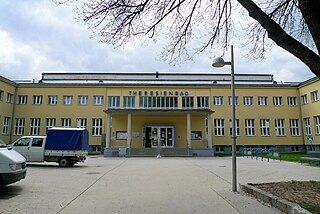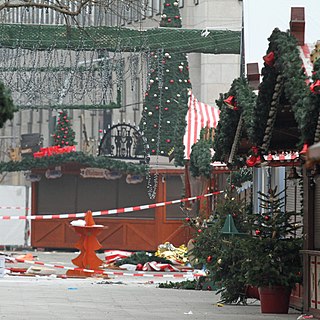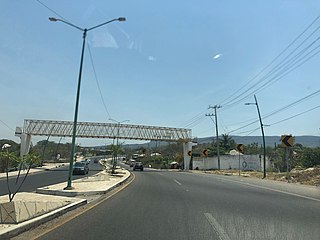The 2010 San Fernando massacre, also known as the first massacre of San Fernando, was the mass murder of 72 undocumented immigrants by the Los Zetas drug cartel in the village of El Huizachal in the municipality of San Fernando, Tamaulipas, Mexico. The 72 killed—58 men and 14 women—were mainly from Central and South America, and they were shot in the back of the head and then piled up together. The bodies were found inside a ranch on 24 August 2010 by the Mexican military after they engaged in an armed confrontation with members of a drug cartel. They received information of the place after one of the three survivors survived a shot to the neck and face, faked his death, and then fled to a military checkpoint to seek help. Investigators later mentioned that the massacre was a result of the immigrants' refusal to work for Los Zetas, or to provide money for their release.
Although it is difficult to measure how many people reside in the UK without authorisation, a Home Office study based on Census 2001 data released in March 2005 estimated a population of between 310,000 and 570,000. The methods used to arrive at a figure are also much debated. Problems arise in particular from the very nature of the target population, which is hidden and mostly wants to remain so. The different definitions of 'illegality' adopted in the studies also pose a significant challenge to the comparability of the data. However, despite the methodological difficulties of estimating the number of people living in the UK without authorisation, the residual method has been widely adopted. This method subtracts the known number of authorised migrants from the total migrant population to arrive at a residual number which represents the de facto number of illegal migrants.
The Ranong human-smuggling incident was a human smuggling disaster in Ranong, Thailand in April 2008. 54 people suffocated to death in a seafood container while being smuggled from Myanmar, to Phuket, Thailand.

On 18 June 2000, just before midnight, 58 dead bodies were found in a lorry in the port town of Dover, United Kingdom. Two people were found alive but injured and taken to hospital.

On 22 December 2014 a bin lorry collided with pedestrians in the city centre of Glasgow, Scotland, killing six and injuring fifteen others. The driver of the council-owned vehicle, Harry Clarke, said he had passed out at the wheel. A similar blackout had happened to him in the driving seat of a bus. He had not disclosed that incident on his heavy goods vehicle licence renewal application, despite such self-reporting being mandatory. Clarke was officially told he would not face further prosecution, causing protests from victims' families at the way the case had been handled.

During 2015, there was a period of significantly increased movement of refugees and migrants into Europe. 1.3 million people came to the continent to request asylum, the most in a single year since World War II. They were mostly Syrians, but also included significant numbers from Afghanistan, Nigeria, Pakistan, Iraq, Eritrea, and the Balkans. The increase in asylum seekers has been attributed to factors such as the escalation of various wars in the Middle East and ISIL's territorial and military dominance in the region due to the Arab Winter, as well as Lebanon, Jordan, and Egypt ceasing to accept Syrian asylum seekers.

Migrants have gathered in and around Calais, on the northern French coast, since at least the late 1990s seeking to enter the United Kingdom from the French port by crossing the Channel Tunnel or stowing away in the cargo area of lorries heading for ferries that cross the English Channel. During this time, informal camps of migrants have formed, the most notorious commonly referred to as the Calais Jungle. Other migrants come to the area because they are homeless while seeking asylum in France. The presence of migrants in and around Calais has affected the British and French governments, the Eurotunnel and P&O Ferries companies, and lorry drivers heading for the UK and their companies. EuroTunnel, the company that operates the Channel Tunnel, said that it intercepted more than 37,000 migrants between January and July 2015.

The Petra László incident took place near Röszke, Hungary, on 8 September 2015, during the European migrant crisis, when Hungarian camerawoman Petra László was recorded kicking migrants who were fleeing border police. László was fired after footage of the incident spread in the media and online. In September 2016, she was indicted on charges of breach of peace, and was later found guilty. However, in 2018, the highest court in Hungary reversed the ruling, clearing László of the charges. In its decision, the court stated that her actions constituted only rowdy behaviour, which is a misdemeanour. By then, the statute of limitations for misdemeanours had already expired, and the case was therefore closed.

This is a timeline of the European migrant crisis of 2015 and 2016.
Crimes may be committed both against and by immigrants in Germany. Crimes involving foreigners have been a longstanding theme in public debates in Germany. In November 2015, a report that was released by the Federal Criminal Police (BKA) stated that "While the number of refugees is rising very dynamically, the development of crime does not increase to the same extent." Interior Minister Thomas de Maizière (CDU) noted that "refugees are on average as little or often delinquent as comparison groups of the local population." A 2018 statistical study by researchers at the University of Magdeburg using 2009-2015 data argued that, where analysis is restricted to crimes involving at least one German victim and one refugee suspect and crimes by immigrants against other immigrants are excluded, there is no relationship between the scale of refugee inflow and the crime rate. In 2018 the interior ministry under Horst Seehofer (CSU) published, for the first time, an analysis of the Federal Police Statistic, which includes all those who came via the asylum system to Germany. The report found that the immigrant group, which makes up about 2% of the overall population, contains 8.5% of all suspects, after violations against Germany's alien law are excluded.

On 2 December 2015, at the Theresienbad swimming pool in the Austrian capital Vienna, a 10-year-old boy was raped. The perpetrator, an Iraqi refugee who had arrived in the country two months earlier, claimed that he was motivated by not having sex for four months.

On 19 December 2016, a truck was deliberately driven into the Christmas market next to the Kaiser Wilhelm Memorial Church at Breitscheidplatz in Berlin, leaving 12 people dead and 56 others injured. One of the victims was the truck's original driver, Łukasz Urban, who was found shot dead in the passenger seat. The truck was eventually stopped by its automatic brakes. The perpetrator was Anis Amri, an unsuccessful asylum seeker from Tunisia. Four days after the attack, he was killed in a shootout with police near Milan in Italy. An initial suspect was arrested and later released due to lack of evidence. Nearly five years after the attack, a man who was critically injured during the attack died from complications related to his wounds, becoming the 13th victim. As of December 2023, this attack remains the worst Islamist terrorist attack by number of casualties in German history.
An increasing number of refugees and migrants have been entering the United Kingdom illegally by crossing the English Channel in the last decades. The Strait of Dover section between Dover in England and Calais in France represents the shortest sea crossing, and is a long-established shipping route. The shortest distance across the strait, at approximately 20 miles, is from the South Foreland, northeast of Dover in the English county of Kent, to Cap Gris Nez, a cape near to Calais in the French département of Pas-de-Calais.

On 23 October 2019, the bodies of 39 Vietnamese people — 31 men and 8 women — were found in the trailer of an articulated refrigerator lorry in Grays, Essex, United Kingdom. The trailer had been shipped from the port of Zeebrugge, Belgium, to Purfleet, Essex, UK, and the lorry cab and its driver are believed to have originated from Northern Ireland. Investigations involving the national authorities of the UK, Belgium, Ireland and Vietnam have been led by Essex Police.
On 24 March 2020, 78 people – 64 dead and 14 alive – were found in a shipping container on a lorry in Mozambique. It is believed that the group were migrating to South Africa illegally; the route they were on is one that is often used for that purpose.
On 24 November 2021, an inflatable dinghy carrying migrants from France to the United Kingdom capsized in the English Channel causing the deaths of 27 of the 30 people on board. It is believed to be the deadliest incident in the English Channel since the International Organization for Migration began collecting data in 2014.

On December 9, 2021, a traffic accident occurred in the Mexican state of Chiapas when a freight truck smuggling over 180 migrants overturned and hit a bridge. At least 55 people were killed, and over a hundred were injured.
On June 27, 2022, 53 migrants were found dead in and around a tractor-trailer near Lackland Air Force Base in San Antonio, Texas, United States. The deaths, caused by heat exposure and asphyxiation, reportedly occurred during an apparent illegal migrant smuggling attempt across the U.S.–Mexico border. It is the deadliest smuggling incident of its kind in United States history.
The European Union response to the 2015 migrant crisis focused on how the countries organized the efforts in response to the 2015 European migrant crisis at the EU level. The European Commission in May 2015 proposed distributing the incoming refugees based on GDP and population. This proposal was divisive with Slovakia, Hungary, Romania and the Czech Republic refusing any refugees. Some nation states then called on the EU to reduce funding for member countries who did not want to share burdens and didn't share "values...need to start asking themselves questions about their place in the European Union". This attempt to coalition build failed, the European Commission proceeded to strengthen existing systems such as the Common European Asylum System (CEAS), reforming the Dublin Regulation and centralizing the asylum process. There was also challenges to the European borders which came from the Mediterranean Sea; as a response the European Border and Coast Guard Agency engaged in a new operation called Operation Triton.








